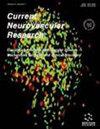静脉溶栓后轻微脑卒中和大血管闭塞患者早期神经功能恶化的神经影像学标志物--CT 灌注
IF 1.7
4区 医学
Q3 CLINICAL NEUROLOGY
引用次数: 0
摘要
目的:早期神经功能恶化(END)是急性缺血性卒中(AIS)的并发症之一,与预后有关。然而,END发生的原因仍不清楚。我们的研究旨在探讨 CT 灌注(CTP)能否预测静脉溶栓(IVT)后轻微卒中和大血管闭塞患者的END。研究方法从2021年1月到2023年8月,连续招募接受静脉溶栓治疗并伴有大血管闭塞的患者。评估美国国立卫生研究院卒中量表(NIHSS)评分后,将他们分为END组(21人)和非END组(20人)。为探讨END的影响因素,进行了多变量逻辑回归分析。此外,还采用了接收方操作特征曲线(ROC)分析来评估CTP在预测END方面的鉴别能力。结果共有 41 名患者(平均年龄为 62.34 ± 10.82 岁,27 名男性)被纳入分析,其中 21 名患者患有END,9 名患者接受了血管内血栓切除术(EVT)。多变量逻辑回归分析表明,rCBV(OR=0.081,95%CI=0.009- 0.721,P=0.024)和入院 NIHSS(OR=1.990,95%CI=1.049-3.772,P=0.035)与END显著相关。rCBV和NIHSS判别END的曲线下面积(AUC)分别为0.708和0.758。我们发现END患者3个月后的改良Rankin量表(mRS)更高。结论rCBV和NIHSS与溶栓后END有关,可能成为预测END的可靠指标。END可能预示着3个月后的不良功能预后。本文章由计算机程序翻译,如有差异,请以英文原文为准。
Neuroimaging Marker-CT Perfusion of Early Neurological Deterioration in Patients with Minor Stroke and Large Vessel Occlusion after Intravenous Thrombolysis
Objective: Early Neurological Deterioration (END) is one of the complications in Acute ischemic stroke (AIS) and relates to prognosis. However, the reason why it occurs is still unclear. Our study is to investigate if CT perfusion (CTP) can predict END in patients with Minor Stroke and Large Vessel Occlusion after Intravenous Thrombolysis (IVT). Methods: Patients who underwent IVT with Large Vessel Occlusion were enrolled continuously from January 2021 to August 2023. After evaluating the National Institutes of Health Stroke Scale (NIHSS) score, they were divided into the END group (n=21) and the Non-END group (n=20). Multivariate logistic regression analysis was performed to explore the factors of END. Receiver-operating characteristic (ROC) curve analysis was also used to assess the discriminative ability of CTP in predicting END. Results: A total of 41 patients (mean age, 62.34 ± 10.82 years, 27 male) were finally included in the analysis; 21 patients had END, and 9 patients underwent Endovascular thrombectomy (EVT). Multivariate logistic regression analysis indicated that rCBV (OR=0.081, 95%CI=0.009- 0.721, p = 0.024) and admission-NIHSS (OR=1.990, 95%CI=1.049-3.772, p = 0.035) were significantly associated with END. The area under the curve (AUC) of rCBV and NIHSS to discriminate END were 0.708 and 0.758. We found patients with END had a higher modified Rankin Scale (mRS) in 3 months. Conclusions: The rCBV and NIHSS were associated with post-thrombolysis END and may become reliable markers to predicate END. END might predict a poor 3-month functional outcome.
求助全文
通过发布文献求助,成功后即可免费获取论文全文。
去求助
来源期刊

Current neurovascular research
医学-临床神经学
CiteScore
3.80
自引率
9.50%
发文量
54
审稿时长
3 months
期刊介绍:
Current Neurovascular Research provides a cross platform for the publication of scientifically rigorous research that addresses disease mechanisms of both neuronal and vascular origins in neuroscience. The journal serves as an international forum publishing novel and original work as well as timely neuroscience research articles, full-length/mini reviews in the disciplines of cell developmental disorders, plasticity, and degeneration that bridges the gap between basic science research and clinical discovery. Current Neurovascular Research emphasizes the elucidation of disease mechanisms, both cellular and molecular, which can impact the development of unique therapeutic strategies for neuronal and vascular disorders.
 求助内容:
求助内容: 应助结果提醒方式:
应助结果提醒方式:


